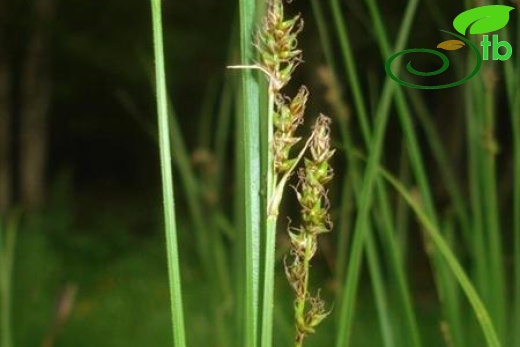Carex paniculata
Carex paniculata
Subsp paniculata: Salkım ayakotu; Subsp szovitsii: Çar ayakotu
Densely caespitose, forming large tussocks to c. 1 m tall; roots thick, felty, almost black. Stems 50-100 cm, rather coarse, erect to spreading, sharply trigonous, scabrid; basal sheaths somewhat shining. Leaves 3.5-11 mm broad, flat or plicate, not keeled, greyish-green, very scabrid, shortly attenuate. Inflorescence 5-15 cm, forming a ± compact panicle of pedunculate spikes or clusters of spikes, lowest branches sometimes branched again. Spikes all similar, androgynous, ovoid, small, few-flowered; bracts amplexicaul, lowest shorter than their branches. Female glumes ovate-triangular, acute, with broad, often lacerate white-hyaline margins and distinct mid-vein. Utricles ± dark nut-brown or dark ferrugineous, broadly to narrowly ovoid, 2.5-4.6 mm, almost plano-convex with dorsal surface very convex, rather dull, veined at base on both sides or almost veinless, gradually narrowed into beak; beak almost triangular, paler brown to greenish, bifid, to 1.5 mm, curving inwards and with scabrid wings reaching halfway down.
1. Basal sheaths pale to blackish-brown, entire; leaves c. as long as stems, to 7 mm broad; lowest branches of inflorescence suberect; female glumes c. as long as utricles, dark yellowish-brown; utricles to 3.1 mm, broadly ovoid, almost veinless or veined only at base, base often ± cordate subsp. paniculata
1. Basal sheaths reddish-brown, often fibrous at margins; leaves shorter than stems, to c. 11 mm broad; lowest branches of inflorescence long, patent or sometimes pendent; female glumes shorter than utricles, reddish-brown; utricles to 4.6 mm, narrowly ovoid, faintly veined but not only at base, base rounded, often stipitate subsp. szovitsii . Euxine element. )


